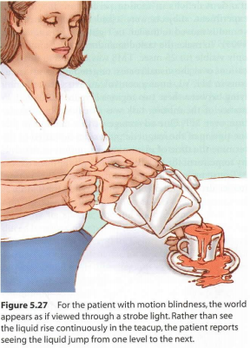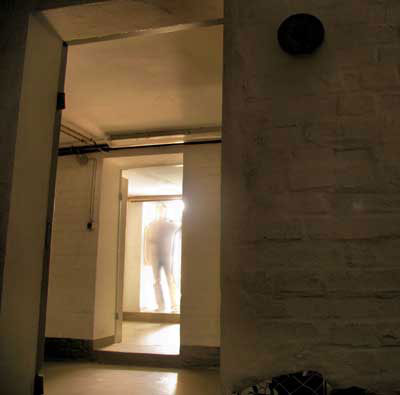Akinetopsia – Ghost Images

Similar to visualizing the world in snapshots – akinetopsia also known as motion blindness is a rare neuropsychiatric condition characterized by an impairment of motion perception and may apparently seem like a supernatural phenomenon. The ghost sightings and disappearances following alien abduction are some of the misinterpretations that may arise due to this condition. As shown in the video above, people with akinetopsia have problems in pouring the tea in a cup, crossing the road, etc. due to inability to perceive the change in position as a fluid motion. There seems to be no problems in visualizing a stationary object and no problems in color and spatial acuity.
Causes:
The condition may occur following the damage to the visual cortex situated in occipital lobe of brain due to trauma or stroke. It has also been associated with an antidepressant “Nefazodone”. Also, akinetopsia can be temporarily induced using transcra nial magnetic stimulation of area V5 in the visual cortex.
nial magnetic stimulation of area V5 in the visual cortex.
As adapted from the video above:
Sight consists of light reflected into the retina of the eye. That light is translated into images by the occipital lobe. In order to perceive the depth and motion, the retina is constantly scanning the image. These movements are called saccades. In between each saccade, the brain links the eye movement and is perceived as motion. If the visual cortex stops to function correctly, the information between the saccades no longer constructs the motion – only still images refreshing sporadically.
From researches:
The visual areas responsible for the processing of motion are areas V5 and V1. V5, also known as the middle temporal (MT cortex), is located in the temporal lobe. This area is located near the intersection of the ascending limb of the inferior temporal sulcus and the lateral occipital sulcus. Neurons in V5 are motion selective and directionally selective. Akinetopsia was first found in a patient which had a lesion of area V5 due to a stroke. V1, also known as the primary visual cortex, is in an area of the brain known as Brodmann area 17. Research has suggested that it is where the processing of visual information begins. While V1 has an effect on motion information, this information can still reach V5 without passing through V1. V1 is not necessarily even needed for the perception of simple visual motion as V5 often operates independently of V1. While the inactivation of V1 can limit the perception of motion, it will not stop it completely.






1 Comment
U r awesome
Comments are closed.